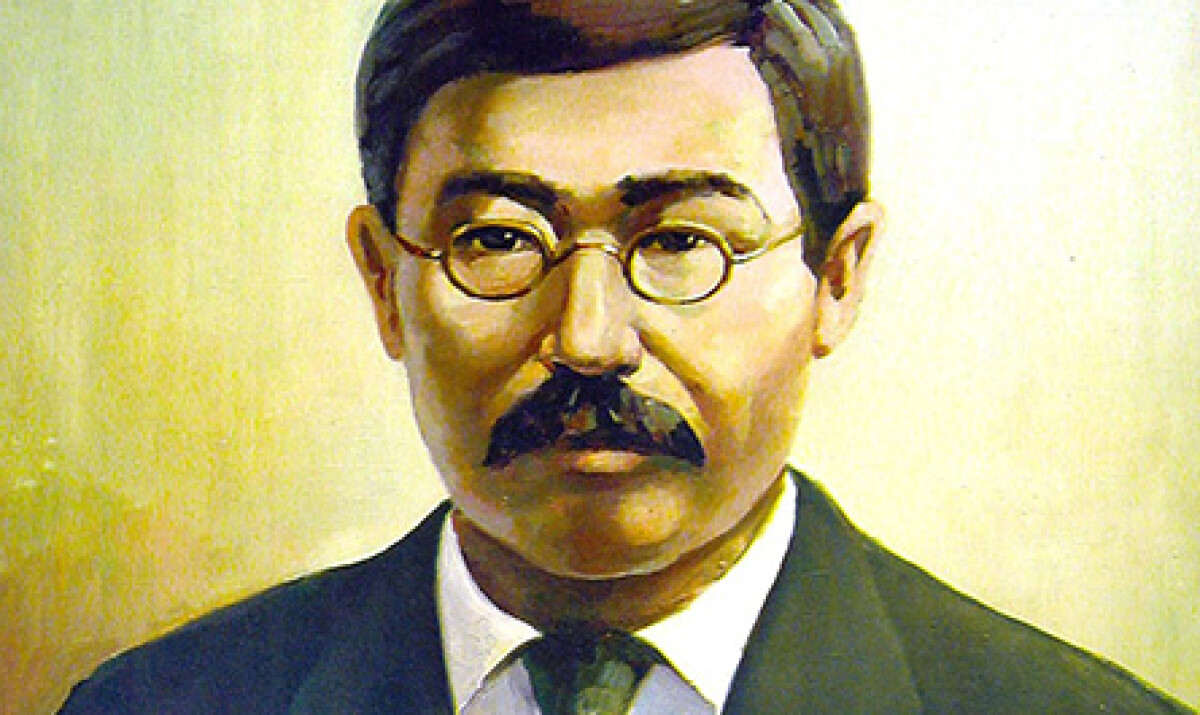
"In this life there were people whose works delighted humanity.
Their names are passed on from generation to generation.
There were a lot of such people among the Kazakhs and Kirghiz",
Halel Dosmukhamedov.
Halel Dosmukhamedov was born on April 24, 1883 in the Kyzylkoga district of the Atyrau region. At the age of 12 he was among the ten boys from the aul for the first time trying on the military uniform of the Ural real military school. The eight years spent in Uralsk were years of study, barracks discipline, drill step and military training - today it would be called youth in quarters. And then a 20-year-old guy, full of ambition and a thirst for knowledge, went to St. Petersburg to the Imperial Military Medical Academy.
Being interested in politics, Dosmukhamedov believed that no party expressed the interests of the Kazakh people and, in general, the peoples of the Russian Empire. The Social Democrats talked about the workers, the Socialist-Revolutionaries talked about the peasantry, the Cadets spoke from the standpoint of Russian nationalism. Only in the speeches of the Socialist-Revolutionaries did the ideas of local autonomies slip.
The revolution of 1905 awakened Dosmukhamedov's political position. In the summer he traveled around the villages with agitation, he was actively published in the newspapers "Ural leaf" in Russian and "Fiker" in the Tatar language, where the great Tatar poet Gabdulla Tukai was published. The appearance of the newspaper "Kazakh" in 1913 Dosmukhamedov called the creation of a center led by Bukeikhanov, Baytursynov, Dulatov, who united and led the layers of the Kazakh people, awakened by the 1905 revolution.
Dosmukhamedov graduated the Academy with excellent marks in 1909 and received a diploma of a military doctor. For some time Dosmukhamedov worked as a doctor in the Ural Cossack Host, and then became a district doctor in the Temir district of the present Aktobe region.
In 1915, in a number of regions of Kazakhstan, including in the west, an epidemic of plague broke out. Halel Dosmukhamedov made a great contribution to the fight against this dangerous disease. He owns the work "How to deal with the plague among the Kazakh population", and today it is a detailed, understandable visual tool for the elimination of outbreaks of the plague. In addition, Dosmukhamedov has written many works devoted to the fight against various infectious diseases, such as typhoid fever, as well as teaching aids on hygiene and other areas of medicine.
In addition, Dosmukhamedov is the author of a large number of articles, essays, scientific papers, studies on the history of Kazakhstan, literature, linguistics. These materials are devoted to the uprisings of Issatay and Makhambet, Kenesary in the middle of the XIX century, the genealogy of the ruler of Samarkand Zhalantos-Bakhadur, the legend about the construction of the Kokeltash madrasah in Bukhara. Dosmukhamedov's short essay "Kazakh Folk Literature", dedicated to the Bashkir ethnographer, collector of Kazakh folklore Abubakir Divayev, is perhaps the first scientific classification of Kazakh literature on genres.
Dosmukhamedov also studied and the creativity of such akyns as Murat Monkeuly and Sherniyaz. Materials on the genealogy - Shezhire, collected by Dosmukhamedov complement the studies of Shakarim and Mashkhur-Zhusup Kopeev. And Dosmukhamedov's scientific works on linguistics are as deep and thorough as the investigations of Baytursynov.
Dosmukhamedov was concerned about the search for translations and transliteration into the Kazakh language of international scientific terms, new words denoting objects and phenomena that appeared with the development of progress. He contributed to the development of the Latin alphabet of the Kazakh language, which he actively supported. The contribution of Dosmukhamedov to the formation of the grammar of the Kazakh language, the systematization of spelling rules and other grammatical rules of the Kazakh language is also huge.
Textbooks and articles by Dosmukhamedov on zoology, botany, the study of the human body, nature studies, in which one can find basic knowledge in physics, chemistry, astronomy, and mathematics, are written in interesting and accessible language. All of them served to enlighten the broad strata of the population, eliminate illiteracy, and broaden the horizons of future doctors, feldshers.
But first of all the military doctor, scientist, researcher Halel Dosmukhamedov remained in history as a state and political figure, one of the leaders of Alash-Orda. When the "Alash" party was established and the Alash autonomy was proclaimed, namesakes (not relatives) Halel and Zhakhansha Dosmukhamedovs became the head of the Western branch of the "Alash" party and became equal co-leaders of the western branch of the Alash-Orda. The government authorities that were headed by the Dosmukhamedovs were located in Zhympity in the West Kazakhstan region.
Dosmukhamedov died in 1939 in prison during Stalin's repressions.
As a token of gratitude for the invaluable contribution of our great compatriot, the ardent fighter for his independence, the remarkable doctor Halel Dosmukhamedov, memorial plaques were installed; the streets and schools of the cities of Atyrau and Almaty were given his name; a two-volume collection of selected works was published. The name of Halel Dosmukhamedov was given to the Atyrau State Pedagogical University. In 2009, in the KazNMU named after Asfendiyarov, was created School of Public Health named after Dosmukhamedov.
Outstanding Kazakh scientist, doctor, folklorist, journalist, educator, public figure, professor, corresponding member of the Regional Studies Bureau of the Russian Academy of Sciences, he became one of the founders of the National Academy of Sciences.
Translated by Raushan MAKHMETZHANOVA
